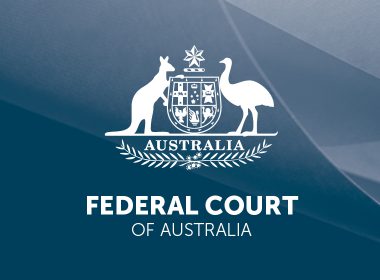Key decisions
- Australia and New Zealand Banking Group Limited v Australian Securities and Investments Commission [2024] FCAFC 128 (Joanne Shepard)
- Saw v Seven Network (Operations) Ltd [2024] FCA 1210 (Paris Hart)
CORPORATIONS
Breach of continuous disclosure obligations – Corporations Act 2001 (Cth), s 674(2) – whether error in finding pleaded information fell within s 677 – ‘persons who commonly invest in securities’ – whether proper regard to what appellant knew and understood when assessing materiality.
Australia and New Zealand Banking Group Limited v Australian Securities and Investments Commission [2024] FCAFC 128 (Markovic, Lee and Button JJ)
The Australia and New Zealand Banking Group Limited (‘ANZ’) sought to raise $2.5 billion by way of a fully underwritten institutional share placement. The placement was announced on the morning of 6 August 2015 and proceeded that day after trading in ANZ’s shares was halted. On the morning of 7 August 2015, ANZ announced it had completed the capital raising of $2.5 billion. However, ANZ did not disclose that up to $790 million of the shares, being almost a third of the total placement, had not been allocated to investors but had, instead, been placed with the underwriters.
The placement had not proceeded as planned and the demand from long term investors was limited. The allocation of up to $790 million to the underwriters had been approved by ANZ during the course of 6 August 2015 based on the underwriters’ recommendation. This was to avoid a situation in which the shares were allocated to certain hedge funds which might sell their allocated shares quickly and thereby create a disorderly market. In this context, the underwriters indicated and ANZ understood, they would not sell down their position in a way which would create a disorderly after market.
Australian Securities and Investments Commission (‘ASIC’) alleged ANZ had been in breach of its continuous disclosure obligations by failing to disclose to the market, on the evening of 6 August 2015 or the following morning before trading, that the underwriters were acquiring between approximately $754 million and $790 million of the shares or, alternatively, a significant proportion of the shares.
The Corporations Act 2001 (Cth) (‘Corporations Act’) and the ASX Listing Rules (‘Listing Rules’) require listed entities to immediately disclose ‘information concerning the listed entity that is not generally available and that a reasonable person would expect, if generally available, to have a material effect on the price or value of the entity’s securities. A reasonable person is taken to expect information to have a material effect on the price or value of securities where the information would or would be likely to influence persons who commonly invest in securities in deciding whether to acquire or dispose of those securities’ (at [10]).
After hearing and rejecting arguments from ANZ that the relevant information was generally available, the trial judge was satisfied the relevant information was material because persons who commonly invest in securities would expect the underwriters to dispose of their allocated shares promptly and so place downward pressure on ANZ’s share price.
ANZ was ordered to pay a pecuniary penalty of $900,000, in respect of the contravention of s 674(2) of the Corporations Act.
ANZ appealed the decision on liability only.
Issues on appeal
ANZ raised four grounds of appeal:
- the primary judge failed to construe and apply correctly the words ‘persons who commonly invest in securities’ pursuant to section 677 of the Corporations Act (‘Ground 1’);
- the primary judge erred in finding the pleaded information was ‘material’ within the meaning of s 677 of the Corporations Act by failing properly to consider additional context which would render it immaterial (‘Ground 2’);
- the primary judge erred in failing to have proper regard to what ANZ knew and understood concerning the underwriters’ intentions, when assessing the materiality of the pleaded information (‘Ground 3’); and
- the primary judge erred in finding the pleaded information was ‘information concerning it [ANZ]’ within the meaning of Listing Rule 3.1 (‘Ground 4’).
The decision
The appeal was dismissed, with Lee and Button JJ writing separate judgments and Markovic JJ agreeing with each in certain respects, but ultimately determining that all grounds of appeal ought to be dismissed.
Ground 1
Lee J, with Button and Markovic JJ agreeing, rejected ANZ’s argument that ‘persons who commonly invest in securities’ were people who were influenced in deciding to acquire or dispose of securities for a period of time based on company fundamentals (as opposed to short-term fluctuations in price). Lee J determined the expression, ‘to have a material effect on the price or value’ of the entity’s securities, was to be given an expansive meaning as is made clear by s 677. Relevantly, provided other requirements of disclosure are present, it is sufficient (and necessary) if the information would be likely to influence the investment decisions of potential investors. In this respect, ‘influence’ is not a high threshold. Further, it does not require ASIC to employ a rigid numerical formula and establish that a percentage price movement would occur in the share price upon any corrective disclosure. In addition, the concept of an effect on ‘fundamental value’ (as opposed to price) makes little practical sense in the context of share trading where price frequently diverges from value.
Grounds 2 and 3
ANZ argued the information concerning the underwriters’ take up of almost a third of the placement was not material when considered in the context of other information known to ANZ, namely, that the underwriters were not intending to sell the acquired securities promptly. Given this further context, ANZ submitted any apprehension that there would be downward pressure on share price was not accurate and that the disclosure would, potentially, be misleading in this respect. Button J accepted the assurances given by the underwriters were relevant contextual information and subjectively credible. In this respect, her Honour found the primary judge fell into error by dismissing the assurances as relevant context, as they had been given in ‘very general terms’ and ‘the subject of further consideration’ (at [103]).
Ultimately, Button J determined Grounds 2 and 3 ought to be allowed, in respect of certain information, in circumstances where that information was material only because it gave rise to the inference that the shares would be sold promptly which was contradicted by the contextual information provided to ANZ by the underwriters. However, to the extent the contextual information comprised ANZ’s subjective understanding of the assurances, Button J determined the primary judge did not err in not taking this into account.
Lee J determined there was no substance to either ground. His Honour found the test is a wholly objective one and the subjective views of ANZ were not relevant, but, if anything, demonstrated there was a real and abiding concern about the outcome of the share placement on share price which occasioned the seeking of the assurances. Further, the primary judge did not err in dismissing the assurances, expressed in general terms, as relevant contextual information. Ultimately, Lee J was satisfied there was no error in the primary judge concluding the disclosure of the pleaded information would have been viewed by the hypothetical investor as having altered the total mix of information available in such a way as would be expected to have a ‘material effect’ on the price or value of ANZ shares.
Ground 4
The Court dismissed, as misconceived, ANZ’s contention the information was not ‘concerning ANZ’ but rather the trading intentions of shareholders and other matters separate to ANZ.
It followed that the appeal was dismissed with costs.
If the meaning of open justice in the model law can be affected by individual court rules, this would disrupt what was plainly intended to be a national approach.
PRACTICE AND PROCEDURE
Suppression and non-publication orders – statement of claim filed but no defence or reply – matter referred to a mediation yet to occur – whether disclosure of pleadings might imperil mediation – whether orders prevent prejudice to proper administration of justice
Saw v Seven Network (Operations) Ltd [2024] FCA 1210 (18 October 2024) (Perram J)
On 6 September 2024, Ms Saw – a journalist – commenced proceedings against her former employer, Seven Network (Operations) Ltd (‘Seven’), seeking relief for contraventions of the Fair Work Act 2009 (Cth) during her employment.
On 23 September 2024, an amended statement of claim was filed (‘the pleadings’). On 27 September 2024, Seven filed an application for suppression and non-publication orders to prevent the pleadings from being made public until seven days after the termination of a Court-ordered mediation to be held in November or, alternatively, until after the filing of its defence which was due by 18 October 2024. It was this application Perram J determined in this judgment.
Both parties filed evidence and submissions in relation to that application. Three media organisations appeared at the hearing of the application and had been granted access but only to Seven’s interlocutory application. Pending the determination of the application, the Court denied them access to other materials because Perram J concluded it was possible that granting access to those materials could lead to their disclosure. His Honour took the view that the terms of the interlocutory application and supporting arguments were sufficient for the media organisations to know the nature of the issues.
The suppression and non-publication orders
A suppression or non-publication order can only be made if one or more requirements of section 37AG (1) of the Federal Court of Australia Act 1976 (Cth) (‘FCA Act’) are met.
Seven relied upon section 37AG(1)(a) and argued suppression and non-publication orders were necessary in the circumstances of this case, in order to prevent prejudice to the proper administration of justice. The Court stated it is required under section 37AE to ‘take into account that a primary objective of the administration of justice is to safeguard the public interest in open justice’ in making a suppression or non-publication order.
Perram J referred to what he saw as relevant context which was that the disputes between the litigants could either be quelled by the trial of proceedings or by the parties agreeing to settle by the virtue of sections 37M(1) and (2) of the FCA Act.
His Honour stated the policy of the Court was to encourage parties to settle the litigation and this was in the interests of the administration of justice because if the proceedings were not settled, it had to be heard and determined by the Court, depleting the Court`s limited resources.
His Honour also observed that many judges of the Federal Court accepted non-publication and suppression orders over documents on the Court file in order for the parties to be assured that settled proceedings remain confidential. For instance, in Porter v Australian Broadcasting Corporation [2021] FCA 863, this was achieved by ‘removing sensitive pleadings from the Court file and placing them in a physical envelope marked “Not to be opened or made available for inspection by the public other than by the leave of the Court’” (at [8]). In some other Federal Court cases, non-publication and suppression orders were made with respect to parts of pleadings after the settlement of proceedings to remain confidential under rule 2.32 of the Federal Court Rules 2011 (Cth) (‘FCR’). For instance, in Patterson v Westpac Banking Corporation [2024] FCA 629, it was held that lack of access to pleadings or documents filed in the Court could be a relevant factor to be taken into account by the Court in ascertaining the necessity of preventing prejudice to the proper administration of justice because it enhanced the likelihood of the parties’ negotiating a settlement.
His Honour further noted another relevant factor was the ‘very significant public interest’ existing in the settlement of proceedings at an early stage. See, for example, Valentine v Fremantlemedia Australia Pty Ltd [2013] FCA 1293, which concerned similar circumstances as in the current case where mediation was yet to take place and a defence had not been filed.
His Honour distinguished the current proceedings from the ones in Young v Accenture Australia Pty Ltd [2024] FCA 1013 where the Court declined to make a non-publication order with respect to pleadings on the court file before a mediation because many of the allegations in the pleadings were already in the public domain.
Perram J opined that the proceedings were at an early stage, and the pleadings contained sensitive allegations about the workplace at Seven and conduct of persons not party to the litigation. Also, the proceedings attracted attention in the media and it was likely that contents of the pleadings would be widely disseminated if they were made public. His Honour also noted this would cause embarrassment to Seven, however, mere embarrassment was not a sufficient ground to establish such an order as per Ogawa v President of the Australian Human Rights Commission [2022] FCAFC 160.
Seven argued the prospects of settlement would have been enhanced if the pleadings were not made public prior to the mediation. However, Ms Saw submitted the likelihood of settlement would not be materially affected by it.
Nevertheless, his Honour refused to accept Ms Saw’s submission and stated there was a significant risk that publication of the pleadings would have a pernicious effect on the prospects of success of the mediation.
Consequently, it would be prejudicial to the proper administration of justice under s 37AG(1)(a) to permit the pleadings to be publicly available. His Honour, in reaching that conclusion, also took into account that, under s 37AE of the FCA Act, a primary objective of the administration of justice was to safeguard the public interest in open justice.
However, his Honour disagreed with Rangiah J’s conclusion in Ryan v Transurban Limited [2024] FCA 994 that ‘the reference to open justice in s 37AE had to be understood in a context which included the operation of FCR r 2.32’ for the following reasons:
- ‘the meaning of the expression “the public interest in open justice” in s 37AE of the FCA Act is a question of statutory construction of that provision. The meaning of that expression cannot be affected by delegated legislation made under the Act in the form of FCR r 2.32(2)…’;
- section 37AG was based on a model law adopted by the Commonwealth, New South Wales and Victoria, and therefore, ‘the concept of “open justice” should receive a uniform interpretation…’; and
- ‘if the meaning of open justice in the model law can be affected by individual court rules, this would disrupt what was plainly intended to be a national approach’ (at [20]).
Consequently, the suppression and non-publication orders were granted.
Amendment disallowance
Seven also sought an order that the amendments to the pleadings be disallowed. Those amendments concern the texts of various emails. His Honour stated that rule 16.02(1)(d) of the FCR ‘requires a pleading to “state the material facts on which a party relies that are necessary to give the opposing party fair notice of the case to be made against that party at trial, but not the evidence by which the material facts are to be proved”’ (at [29]). His Honour stated the text of those emails, were not material facts of this case. Therefore, the pleadings were in breach of rule 16.02(1)(d) and the amendments was disallowed by virtue of rule 16.52 of the FCR.




